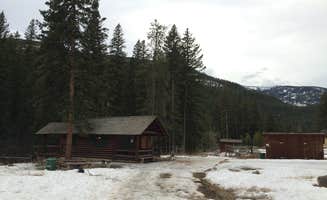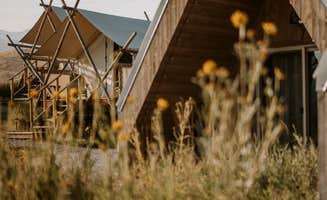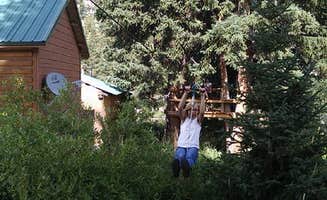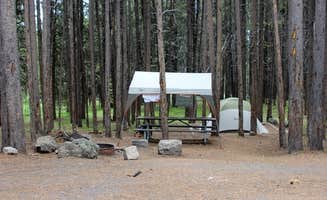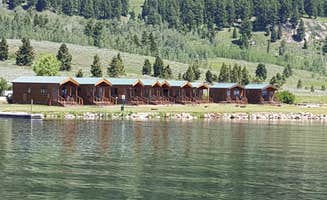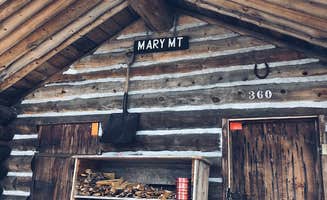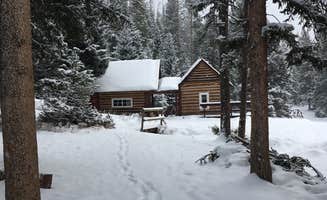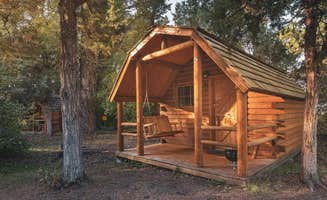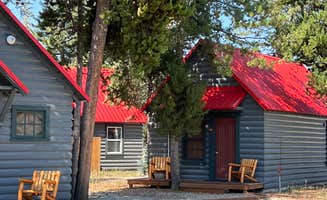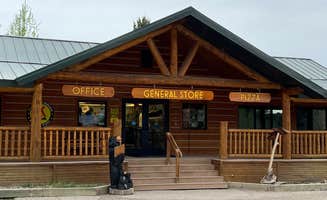Cabin camping near Gardiner, Montana provides access to Yellowstone National Park at elevations ranging from 5,300 to 7,500 feet. Most cabins are accessible from May through mid-October, with peak season spanning July through August when daytime temperatures average 70-80°F. Winter cabin access becomes limited after the first significant snowfalls in November.
What to do
Wildlife viewing tours: 15-20 miles from central cabins. Yellowstone Park / West Gate KOA Holiday offers convenient access for wildlife excursions. "This KOA is very well kept. Staff are extremely helpful. Camp sites are clean and well kept. Having this campground nearby Yellowstone is a perfect location for a place with all the amenities," notes one camper about the advantages of establishing a base camp for daily excursions.
Fishing in Madison River: 10-minute drive from West Yellowstone cabins. The river access provides excellent trout fishing opportunities from June through September. At Madison Arm Resort, "There are bear proof boxes in each site for your food items, be sure to use them. Tent camping is okay, and they have nice pads to set the tents up on in the sites," one camper advises.
Winter snowmobiling: December-March rentals available. Several outfitters near cabin locations offer snowmobile rentals starting at $150 per day. Trails connect directly from some cabin properties. "We felt so lucky to get a spot with a couple of days advance notice for Yellowstone National Park. The campground was serene, beautiful, and remote," shares a visitor about wintertime accommodations at Indian Creek Campground.
What campers like
Privacy between cabin sites: Sun Outdoors Yellowstone North provides more separation than typical campgrounds. "Spaces are close but better than many other private campgrounds around Yellowstone. Great views and elk and deer roam the park," reports one camper who appreciated the wildlife viewing opportunities right from their cabin site.
Creek-side cabin locations: Several cabin rentals offer stream access within 50 feet of the door. "The creek is beautiful. The cabin is close to the road making it easily accessible but doesn't feel very secluded, although there wasn't much traffic when I was there mid-week in April," notes a visitor at Mill Creek Cabin.
Walking access to trailheads: Many cabins connect directly to hiking trails. "There is a trailhead just outside the entrance. Tall grass was everywhere and we never saw anyone parked there. We're assuming that it doesn't get used as much," mentions a visitor at Gallatin National Forest Snowbank Campground, noting the less-traveled paths that can be accessed from cabin areas.
What you should know
Generator restrictions: Most cabin areas prohibit generator use entirely. "No generators allowed and no electricity. Fires were allowed in rings. Located in a forested part of north Yellowstone Park," explains a camper at Indian Creek Campground, highlighting the quiet atmosphere maintained at many cabin locations.
Water quality varies by location: Some cabins have potable water while others require bringing your own. "We noticed the water was bad, tea colored and dumped it on the ground. The state park down the road charges $10 for the whole year," shared one visitor about water availability issues at Madison Arm Resort.
Off-season closures: Many facilities close completely from October through April. Yellowstone Grizzly RV Park and Resort runs "May 1 - Oct 15" according to their seasonal schedule. "Very clean, great staff, we had a large enough site to put out the dog fence. Rental car drop off at registration," notes a visitor who stayed during operational months.
Tips for camping with families
Book cabins 6-9 months in advance: Peak season reservations fill quickly, especially for family-sized units. "We were nervous about trying to find a campground in Yellowstone without a reservation as all the reviews made it seem impossible," shared one family who ultimately secured accommodations.
Pack entertainment for weather days: Summer afternoon thunderstorms can last 2-3 hours, requiring indoor activities. "We got set up just before the thunderstorms. It rained hard and then the hail started," reports a visitor at Gallatin National Forest Snowbank Group Campground, highlighting the need for rainy-day plans.
Utilize camp stores for emergency supplies: Most cabin areas have limited essentials available. "They have a nice office with some local items for sale that make cute little gifts. The grounds are beautiful. Green and watered. Covered picnic shelters are available," notes a visitor about the practical amenities at a nearby campground.
Tips from RVers
Cabin alternatives for RV mechanical issues: Canyon Campground — Yellowstone National Park offers emergency cabin rentals if RV problems occur. "This was our second trip to Yellowstone; the first time we stayed in Grant Village. We found the location far more suitable as a single base camp for exploring Yellowstone to the north, south, east and west," shares an experienced camper about the strategic advantages of the location.
Limited cell service: Download maps and information before arrival as connectivity is minimal. "We did not have a cell signal, but Starlink worked great in our campsite," mentions one RVer who found alternative connectivity solutions at their cabin site.
Early arrivals recommended: Cabin check-in can take 30-45 minutes during peak season. "We got there around 9 a.m. and had plenty to choose from. Lots of trees- perfect for hammocks. You have people kind of close, but spots are spaced out well so you still feel private," explains a visitor about the arrival process.


